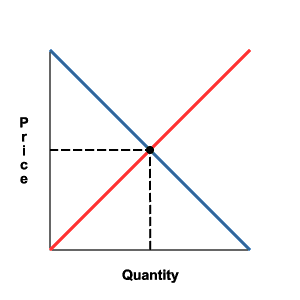Note: This article was made as I had just enrolled in COMM101 after dropping another course. I was not aware of blog post guidelines at that time, which explains the length of this article.
For my first blog post on business ethics, I decided to bring up a somewhat special case I learned about in my sociology classes in Sciences Po, Paris, more than a year ago. I call it special because it is not news, nor is it the description of a specific company or industry’s business practices. Rather, it is an economic sociology research article written by Neil Fligstein and Taekjin Shin that deals with the well-known doctrine of “shareholder value”.
This article, titled Shareholder Value and the Transformation of the U.S. Economy, 1984–2001 and available right here, deals with the influence of shareholder value on the US economy in the 1970s, when American economic growth was fairly low. It was brought up by economists and business leaders as a solution to regain high profits and growth. Its philosophy was simple: managers must focus on profit maximization for the shareholders as their one and only objective. How? Vertical mergers, financial strategies… and layoffs as well as weakening of labour unions.
Indeed, the two authors show, thanks to a huge analysis of 62 different industries and to earlier work references, that layoffs were frequent in that period because companies wanted to focus on their “core competencies” to maximize marginal profit. They also note that labour unions clearly weakened in the 1984-2001 period, through de-unionization, and sum up all their results in a big table I will not directly show here for fear of Copyright infringements. You can find it at the website I linked above.
This raises a very simple, yet essential ethical point: should a business let go of hundreds (or thousands) of employees for the sake of profit maximization? As the two authors sum it up, “workers were certainly being treated less like stakeholders and more like factors of production.” When they were not profitable enough, firms simply got rid of them along with associated infrastructures (such as outdated factories, or agencies in less lucrative markets).
When a firm is doing very poorly or losing money, layoffs are obviously understandable. But what about a healthy, or even leading firm closing less productive sites? Many times, firms only intend to increase marginal profit, not to cover up losses (a well-known case in France lately is the relocation of companies from Europe into countries where labour costs are cheaper). This means the firm is actually making a good amount of money… but it could make more, and provide shareholders with higher profit. That is precisely what happened in the 1980s in the United States: many industries were not as profitable as they used to be, and layoffs happened as an attempt to increase marginal profits. Most firms could have avoided layoffs entirely, but this might have resulted in suboptimal income.
So should a company not increase its margins for the sake of a less profitable factory and the people who work there? Should a company treat workers more as stakeholders they respect or as factors of production they can easily dispose of? That is the main ethical issue this research paper raises.
Based on the specific study I am focusing on in this post, a pragmatic point can be made: at the industry level, layoffs actually seem to have led to fairly lower profits (as expressed by returns on assets)! This means the entire managerial strategy which relied on vertical mergers, layoffs, and de-unionization (amongst others) apparently did not work out in the industries the authors studied. While this result is not sufficient to clearly argue in favor of a more “stakeholder-oriented” approach, based not only on profit but also on consumer, supplier and general welfare, it remains very interesting to point out, because things apparently did not work as expected.
On a more general note, whether or not business ethics make any sense is arguable both ways. It is commonly said that a company should be “rational” and focus on maximizing profit; shareholders, not stakeholders, should be any manager’s concern. For instance Milton Friedman, a great defendant of this thesis, wrote that “there is one and only one social responsibility of business–to use its resources and engage in activities designed to increase its profits so long as it stays within the rules of the game, which is to say, engages in open and free competition without deception or fraud.” (source).
The “rules of the game” are very narrow according to Friedman, and do include openness, freedom, and the absence of deception or fraud. But it does not include caring about employees, suppliers, environmental issues, consumers, institutions or any other “stakeholder”. Yet, why can we not broaden the “rules of the game”? Social norms exist and pressure people into acting in certain ways and into respecting certain ethics very well. Why should it not be the case for business? However, just as individuals do not necessarily respect ethics and in many occasions listen to their self-interest, there is no reason businesses should systematically follow commonly shared ethics. That is why the strongest of norms are ones brought upon and systematized by political authorities, at the local or federal level. Only then, I believe, can we argue that businesses have ethics they must systematically respect. For now, there is only “ethics” and “social responsibilities”, but while they appear to exist, they are neither clear nor do they have to be respected to “stay in the game”.



 Gamification actually works, and is becoming more and more popular. It is now at the core of most successful web-based businesses and services. It makes people more interested, participate more, learn better… and it makes employees more productive, too!
Gamification actually works, and is becoming more and more popular. It is now at the core of most successful web-based businesses and services. It makes people more interested, participate more, learn better… and it makes employees more productive, too!
 Today, friends from my French university showed me a
Today, friends from my French university showed me a 
 The website
The website 
 Who’s right? I believe speakers in class put form over substance, and it should be the other way around.
Who’s right? I believe speakers in class put form over substance, and it should be the other way around.  In an article written for
In an article written for 

 An
An 